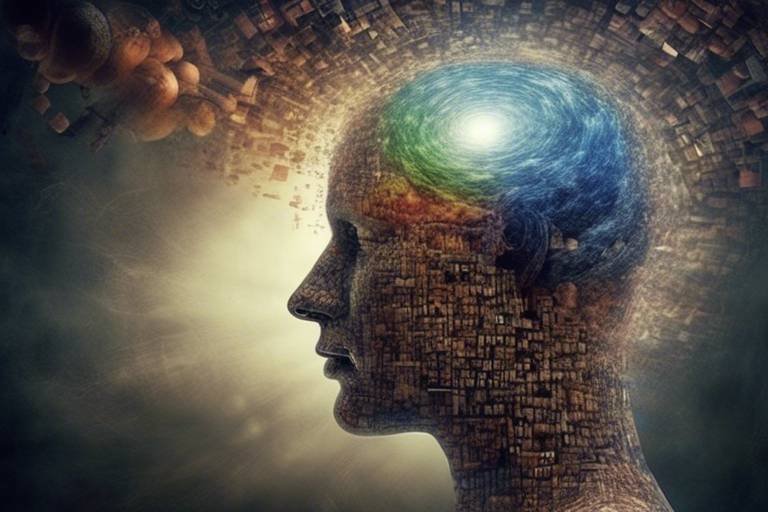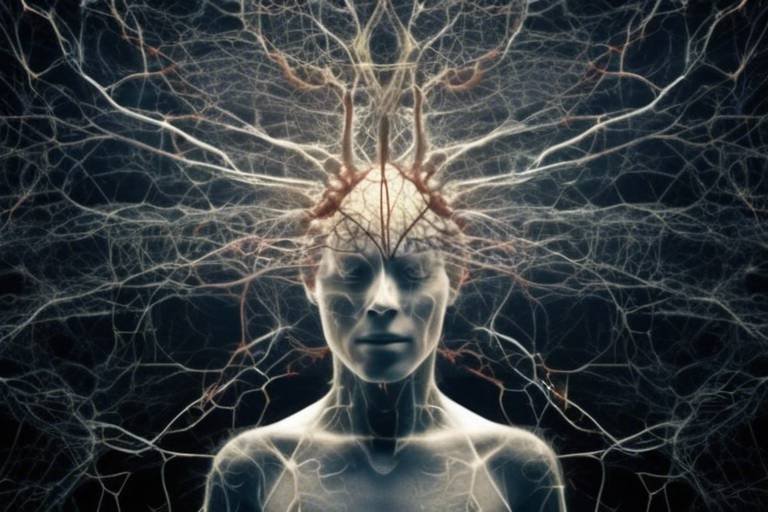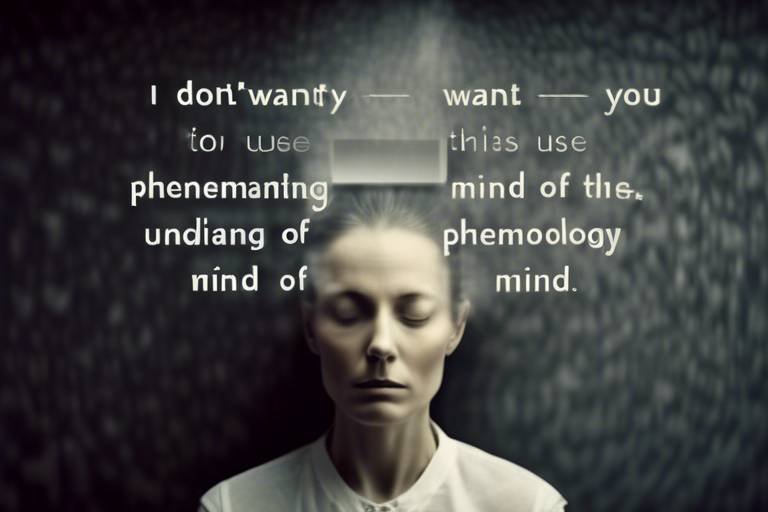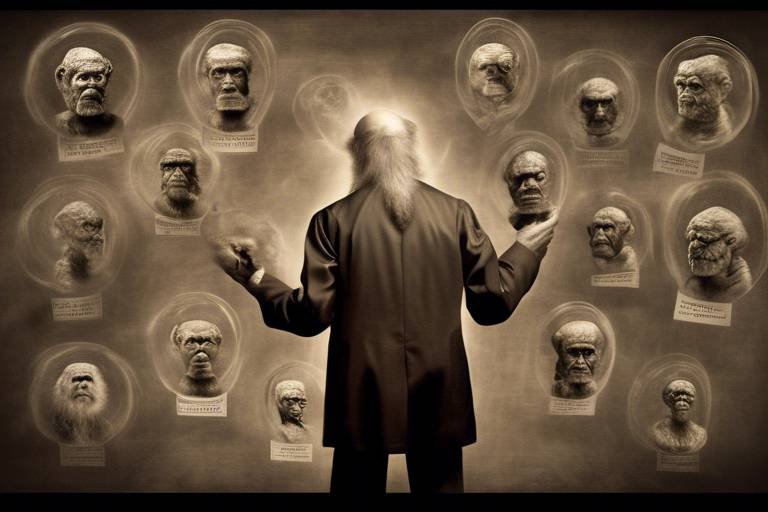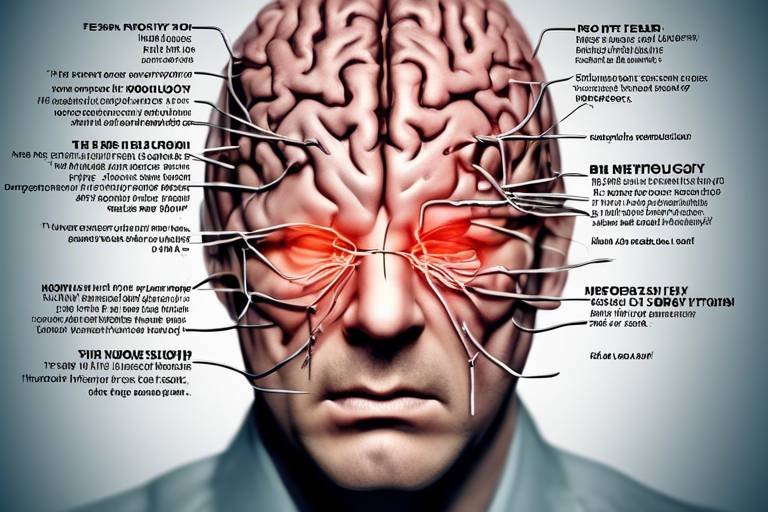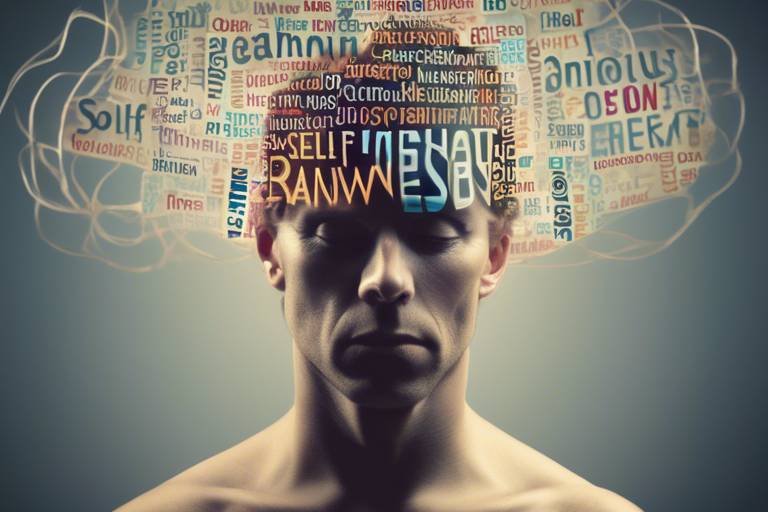Distinguishing Between Conscious and Unconscious Bias
In our daily lives, we encounter countless decisions that shape our interactions and the world around us. However, have you ever stopped to consider how bias—both conscious and unconscious—plays a role in these choices? Understanding the differences between these two types of bias is crucial for fostering a more inclusive and equitable environment, whether in the workplace, in education, or in our personal relationships. This article aims to explore the nuances of conscious and unconscious bias, shedding light on their implications and offering practical strategies for recognizing and mitigating their effects.
To start, let's define what we mean by conscious bias. This type of bias involves attitudes and beliefs that we are fully aware of and can control. For instance, if someone openly expresses a preference for hiring candidates from a specific demographic, that’s a clear example of conscious bias. On the other hand, unconscious bias operates beneath our level of awareness, subtly influencing our perceptions and actions without us even realizing it. Imagine walking into a room and automatically gravitating towards individuals who look like you or share similar backgrounds; this is a manifestation of unconscious bias.
Both forms of bias can have significant consequences in various contexts. For example, conscious bias might lead to discriminatory hiring practices, while unconscious bias can perpetuate stereotypes and inequalities in ways that are often overlooked. By recognizing these biases, we take the first step toward addressing them, fostering environments where everyone has an equal opportunity to thrive.
As we navigate through this article, we will delve deeper into the characteristics of conscious and unconscious bias, provide real-world examples, and discuss the psychological mechanisms that drive these biases. Furthermore, we will explore effective strategies for recognition and mitigation, enabling individuals and organizations to cultivate a more inclusive atmosphere. So, are you ready to challenge your perceptions and biases? Let's dive in!
- What is the difference between conscious and unconscious bias?
Conscious bias refers to attitudes and beliefs that we are aware of and can control, while unconscious bias operates below our awareness, influencing our perceptions and decisions without our knowledge. - How can I identify my own biases?
Self-reflection, feedback from others, and engaging in bias training can help individuals recognize their own biases. - What are some strategies to mitigate bias?
Effective strategies include implementing training programs, fostering diverse teams, and instituting policy changes that promote inclusivity.
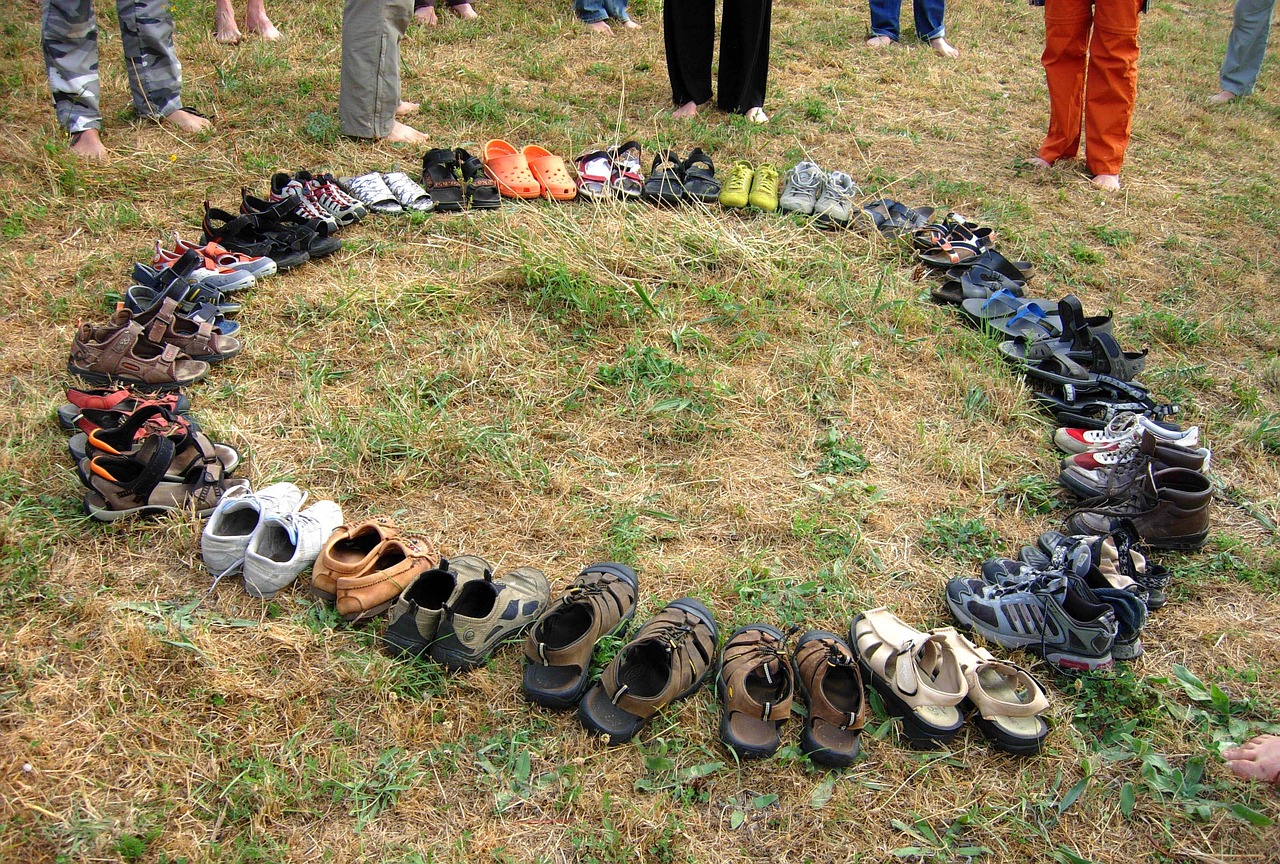
Understanding Conscious Bias
Conscious bias is a term that refers to the attitudes and beliefs that we are fully aware of and can actively control. Unlike its counterpart, unconscious bias, which sneaks into our thoughts without us even realizing it, conscious bias is something we can recognize and choose to act upon. This type of bias can stem from personal experiences, cultural influences, or societal norms, and it often manifests in our judgments and decision-making processes. For example, you may consciously prefer one candidate over another during a job interview based on their educational background or appearance. This awareness allows you to rationalize your decisions, but it also opens the door to potential unfairness.
One of the key characteristics of conscious bias is that it can be influenced by a variety of factors. These may include:
- Personal Experiences: Past interactions can shape our views and create biases that we are aware of.
- Cultural Norms: Societal expectations can impose certain beliefs that we might adopt consciously.
- Media Influence: The portrayal of different groups in media can lead to skewed perceptions that we acknowledge.
In various contexts, conscious bias can significantly impact our interactions. For instance, in the workplace, a manager might consciously favor employees who share similar interests or backgrounds, leading to a lack of diversity in thought and experience. This bias can hinder innovation and create a non-inclusive environment, ultimately affecting the organization's performance. It’s essential to understand that while conscious bias can sometimes be harmless, it can also lead to significant consequences, particularly in professional settings where decisions about hiring, promotions, and evaluations are made.
Recognizing conscious bias is the first step towards addressing it. By being aware of our own biases, we can take proactive measures to ensure that our decisions are fair and equitable. This awareness can lead to more informed choices, fostering an environment where everyone feels valued and included. For example, if a hiring manager recognizes a tendency to favor candidates from a particular university, they can consciously make an effort to widen their search to include applicants from diverse educational backgrounds.
In summary, understanding conscious bias is crucial for anyone looking to create a more equitable environment, whether in personal relationships or professional settings. By acknowledging our biases and actively working to mitigate their effects, we can contribute to a more inclusive society where everyone has the opportunity to thrive.
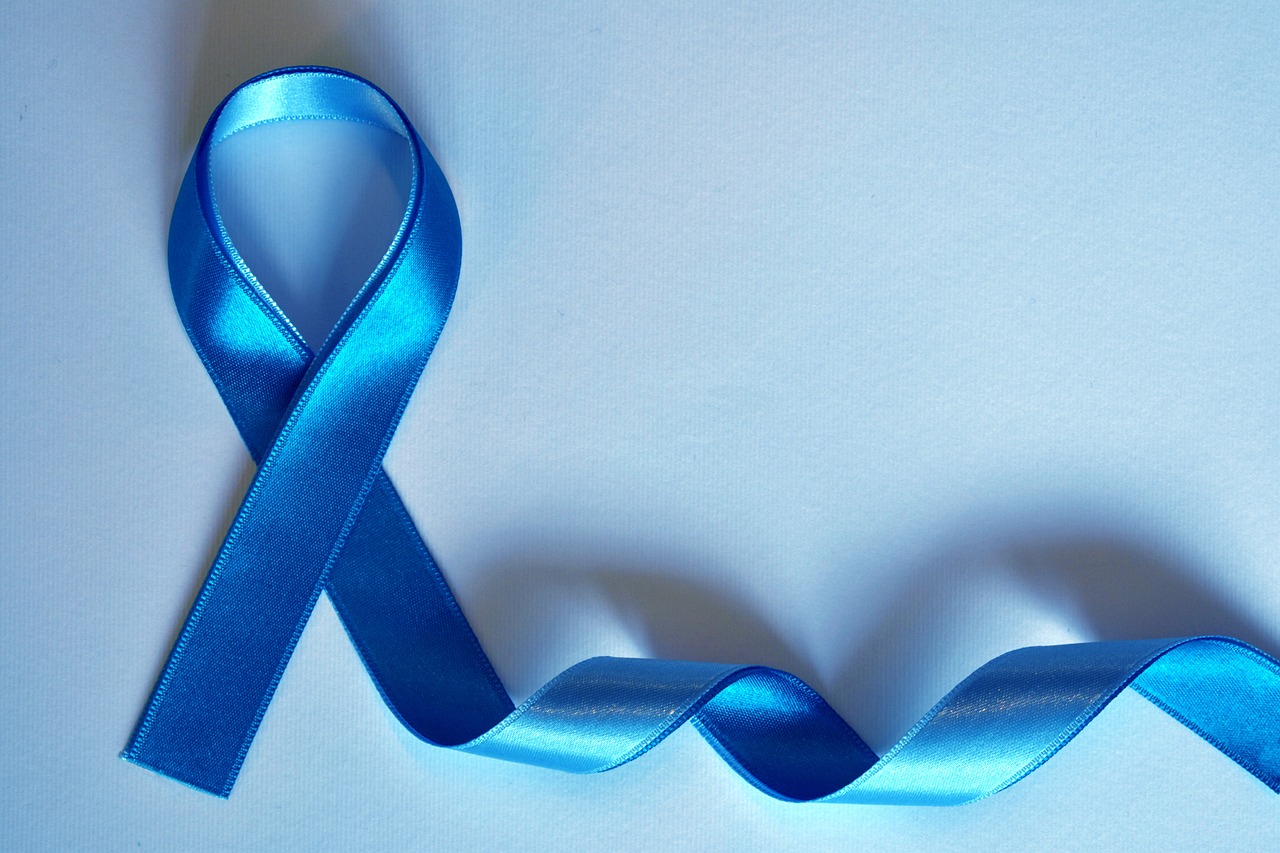
Understanding Unconscious Bias
Unconscious bias, often referred to as implicit bias, operates beneath our conscious awareness, subtly shaping our perceptions and influencing our actions without us even realizing it. Imagine driving a car: you might not consciously think about every movement involved in steering, braking, or accelerating, yet your body instinctively knows how to respond to various situations. Similarly, unconscious biases are like the hidden gears in the machinery of our minds, turning and affecting our judgments in ways we might not fully understand. These biases can stem from a myriad of sources, including cultural stereotypes, personal experiences, and societal norms.
One of the most fascinating aspects of unconscious bias is its prevalence across different contexts. Research has shown that everyone possesses some form of unconscious bias, regardless of their intentions or beliefs. For instance, studies have demonstrated that hiring managers might unconsciously favor candidates who share similar backgrounds or appearances, even if they consciously advocate for diversity. This phenomenon can lead to a lack of representation in workplaces and educational settings, perpetuating cycles of inequality.
Furthermore, the psychological mechanisms behind unconscious bias are quite intricate. Our brains are wired to make quick judgments based on the information available to us. This means that when we encounter someone who fits a certain stereotype, our brains may automatically associate them with specific traits or behaviors, often leading to unfair conclusions. This automatic processing is a survival mechanism, but in today’s diverse society, it can hinder our ability to make equitable decisions.
To illustrate the concept of unconscious bias, consider the following examples:
- Gender Bias: A manager may unconsciously associate leadership qualities with male candidates, overlooking equally qualified female candidates.
- Age Bias: Employers might assume that older workers are less adaptable, despite evidence that experience often leads to better performance.
- Racial Bias: Studies have shown that individuals may unconsciously favor job applicants with names that are perceived as more "traditional" or "Western," regardless of their qualifications.
These examples highlight how unconscious bias can infiltrate various aspects of life, from hiring practices to everyday interactions. The implications are profound, as they can reinforce stereotypes and contribute to systemic discrimination. Recognizing the existence of these biases is the first step toward addressing them; however, awareness alone is not enough. We must actively seek to challenge our assumptions and broaden our perspectives.
In conclusion, understanding unconscious bias is crucial for fostering an inclusive environment. By acknowledging the automatic judgments we make and their potential consequences, we can begin to take meaningful steps toward mitigating their impact. This journey requires continuous reflection, education, and a commitment to change. As we become more aware of our biases, we empower ourselves to create a more equitable society.
- What is unconscious bias? Unconscious bias refers to the automatic judgments and stereotypes we hold about individuals based on their race, gender, age, or other characteristics, which occur without conscious awareness.
- How can I identify my unconscious biases? Self-reflection, seeking feedback from others, and participating in training programs can help you uncover your unconscious biases.
- What are the consequences of unconscious bias? Unconscious bias can lead to unfair treatment, reinforce stereotypes, and perpetuate inequality in various contexts, including workplaces and educational institutions.

Examples of Conscious Bias
Conscious bias is something we often encounter in our daily lives, whether we realize it or not. It's the type of bias that stems from our explicit beliefs and attitudes, and it can manifest in various scenarios. For instance, consider a workplace setting where a manager might favor candidates from a specific university. This preference is a conscious bias, as the manager is aware of their inclination but may not recognize how it limits diversity within the team.
Another classic example can be found in social situations. Imagine a group of friends deciding where to eat. If one friend consistently suggests Italian restaurants because they believe it's the best cuisine, they are exhibiting conscious bias. They are aware of their preference and actively choose to express it, potentially sidelining others' tastes. This can lead to frustration among friends who might feel their preferences are overlooked.
In the realm of hiring, conscious bias can have significant repercussions. For instance, a hiring manager might unconsciously lean towards candidates who share similar backgrounds or interests. This bias can lead to a lack of diversity in the workplace, as the manager may not be aware of how their preferences are shaping their decisions. Awareness of this bias is crucial; recognizing it can pave the way for more equitable hiring practices.
To further illustrate conscious bias, let's take a look at the following table that summarizes some common scenarios:
| Scenario | Description | Potential Impact |
|---|---|---|
| Job Interviews | A manager prefers candidates with similar hobbies. | Reduced diversity in hiring. |
| Social Gatherings | Choosing restaurants based on personal favorites. | Exclusion of others' preferences. |
| Performance Reviews | Favoring employees who share the same background. | Unfair evaluations and promotions. |
It's essential to recognize that conscious bias isn't always negative; it can also reflect personal values and preferences. However, when it influences decisions, particularly in professional environments, it can lead to unintended consequences. For example, in a hiring process, if a recruiter consciously favors candidates from a particular demographic, they may inadvertently overlook highly qualified individuals from diverse backgrounds. This not only impacts the organization’s culture but can also perpetuate inequalities in the job market.
In summary, conscious bias is a double-edged sword. While it can be a reflection of personal beliefs and preferences, it also has the potential to skew our judgment and lead to unfair outcomes. By acknowledging these biases, we can take steps to mitigate their effects, ensuring that our decisions are more inclusive and equitable.

Impact on Decision-Making
The impact of conscious bias on decision-making is profound and often underestimated. When individuals are aware of their biases, they can consciously influence their decisions, leading to outcomes that may favor certain groups over others. For instance, in a hiring process, a manager might consciously favor candidates from a particular university or background, believing that they are more competent based solely on that affiliation. This kind of bias can create a homogeneous workforce, stifling diversity and innovation.
Moreover, conscious bias is not limited to hiring practices. It can seep into various aspects of professional life, including promotions, project assignments, and even performance evaluations. Consider a scenario where a supervisor has a preference for a particular gender or ethnicity based on their past experiences. This bias can lead to unfair advantages for some employees while disadvantaging others, creating an environment of inequality and resentment.
To illustrate the impact of conscious bias on decision-making, let's take a look at a simple table that outlines some potential scenarios:
| Scenario | Conscious Bias | Potential Outcome |
|---|---|---|
| Hiring Process | Favoring candidates from certain universities | Missed opportunities for diverse talent |
| Performance Evaluation | Overvaluing contributions from certain demographics | Unfair promotions and recognition |
| Project Assignments | Assigning projects based on gender stereotypes | Underutilization of team strengths |
Recognizing the role of conscious bias is the first step toward creating a more equitable workplace. By actively addressing these biases, organizations can foster a culture of fairness and inclusivity. It’s essential for leaders to engage in self-reflection and seek feedback from diverse teams to understand their biases better. This awareness can lead to more informed and balanced decision-making processes.
In conclusion, the implications of conscious bias are significant and wide-ranging. By acknowledging its presence, individuals and organizations can work towards making choices that reflect a more equitable and just society. The journey to mitigate conscious bias is ongoing and requires commitment, but the benefits of a diverse and inclusive environment are well worth the effort.
- What is conscious bias?
Conscious bias refers to the attitudes and beliefs that individuals are aware of and can control, influencing their decisions and judgments. - How does conscious bias affect hiring decisions?
Conscious bias can lead to favoritism towards certain candidates based on factors like education or background, potentially overlooking qualified individuals from diverse backgrounds. - Can conscious bias be mitigated?
Yes, through self-reflection, training, and fostering an inclusive environment, individuals and organizations can work to reduce the impact of conscious bias in decision-making.
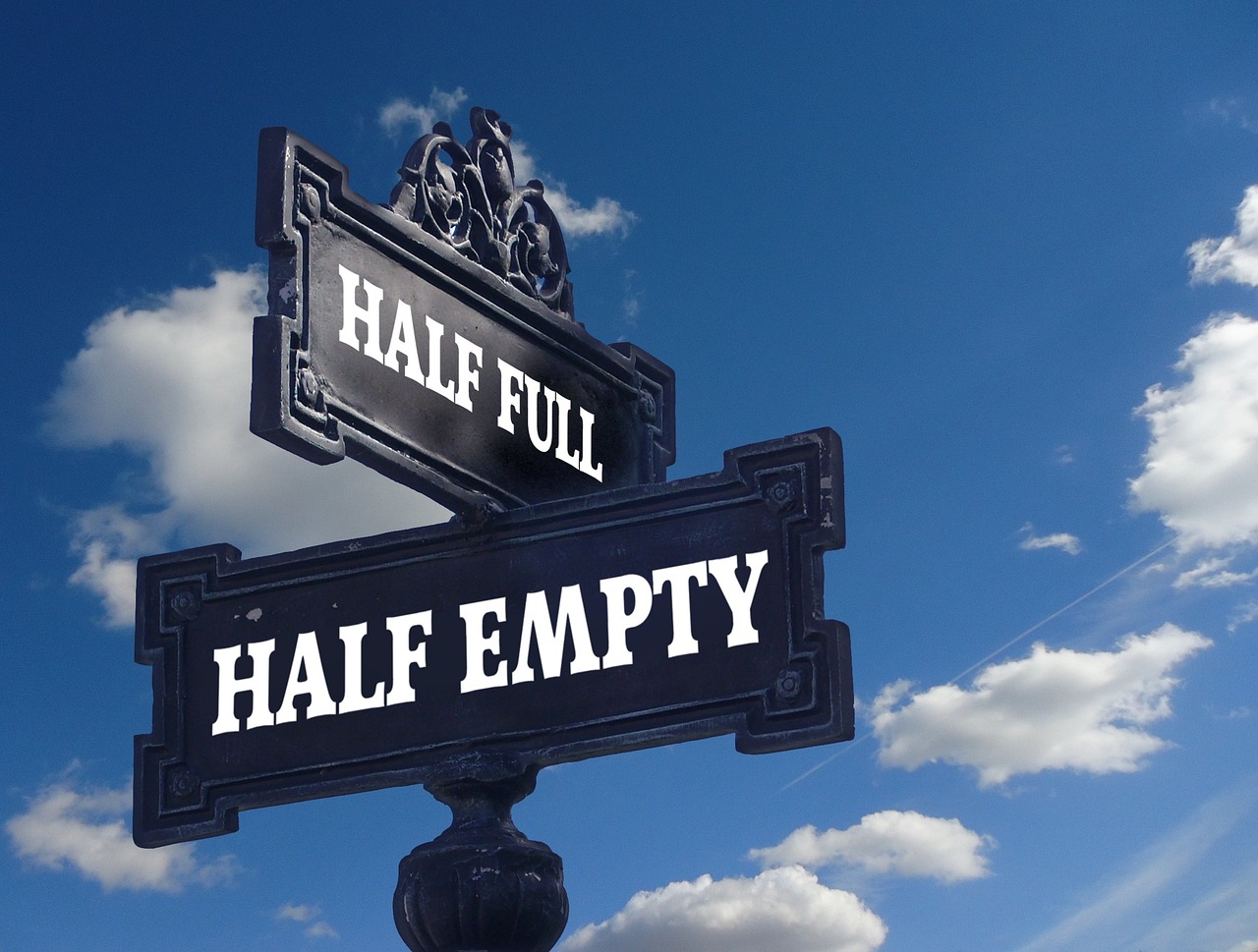
Strategies to Mitigate Conscious Bias
Mitigating conscious bias is crucial for fostering an inclusive environment, both personally and professionally. Fortunately, there are several effective strategies that individuals and organizations can implement to address and reduce these biases. First and foremost, self-reflection plays a vital role. By taking the time to examine our own beliefs, attitudes, and behaviors, we can become more aware of our biases. This self-awareness is the first step toward change.
Another valuable approach is training programs. These programs can help individuals recognize their biases and understand their impact on decision-making. Workshops that focus on diversity, equity, and inclusion can provide participants with the tools they need to confront and challenge their biases. For instance, role-playing scenarios can be particularly effective in helping individuals see situations from different perspectives.
Creating an inclusive environment is also essential. This means actively promoting diversity within teams and ensuring that all voices are heard. When people from varied backgrounds collaborate, it not only enriches the decision-making process but also helps to counteract biases. Having diverse teams can lead to more innovative solutions and a broader understanding of issues.
Moreover, organizations can implement structured decision-making processes. For example, using standardized criteria for hiring or promotion can help to minimize the influence of personal biases. When everyone follows the same guidelines, decisions are more likely to be based on merit rather than subjective opinions.
Lastly, seeking feedback from peers and mentors can provide valuable insights into our behaviors and attitudes. Constructive criticism can help us identify blind spots and encourage growth. By fostering a culture where feedback is welcomed and acted upon, organizations can create a more supportive environment for addressing biases.
In summary, mitigating conscious bias requires a multifaceted approach that includes self-reflection, training, creating inclusive environments, structured decision-making, and seeking feedback. By actively engaging in these strategies, we can work towards a more equitable society where everyone has the opportunity to thrive.
- What is conscious bias? Conscious bias refers to the attitudes and beliefs that individuals are aware of and can control, influencing their judgments and decisions.
- How can I identify my conscious biases? Self-reflection and seeking feedback from others can help you recognize your conscious biases.
- Are there specific training programs for mitigating bias? Yes, many organizations offer workshops focused on diversity, equity, and inclusion that can help individuals recognize and address their biases.
- What role does feedback play in reducing bias? Feedback can provide insights into your behaviors and attitudes, helping you identify areas for improvement.
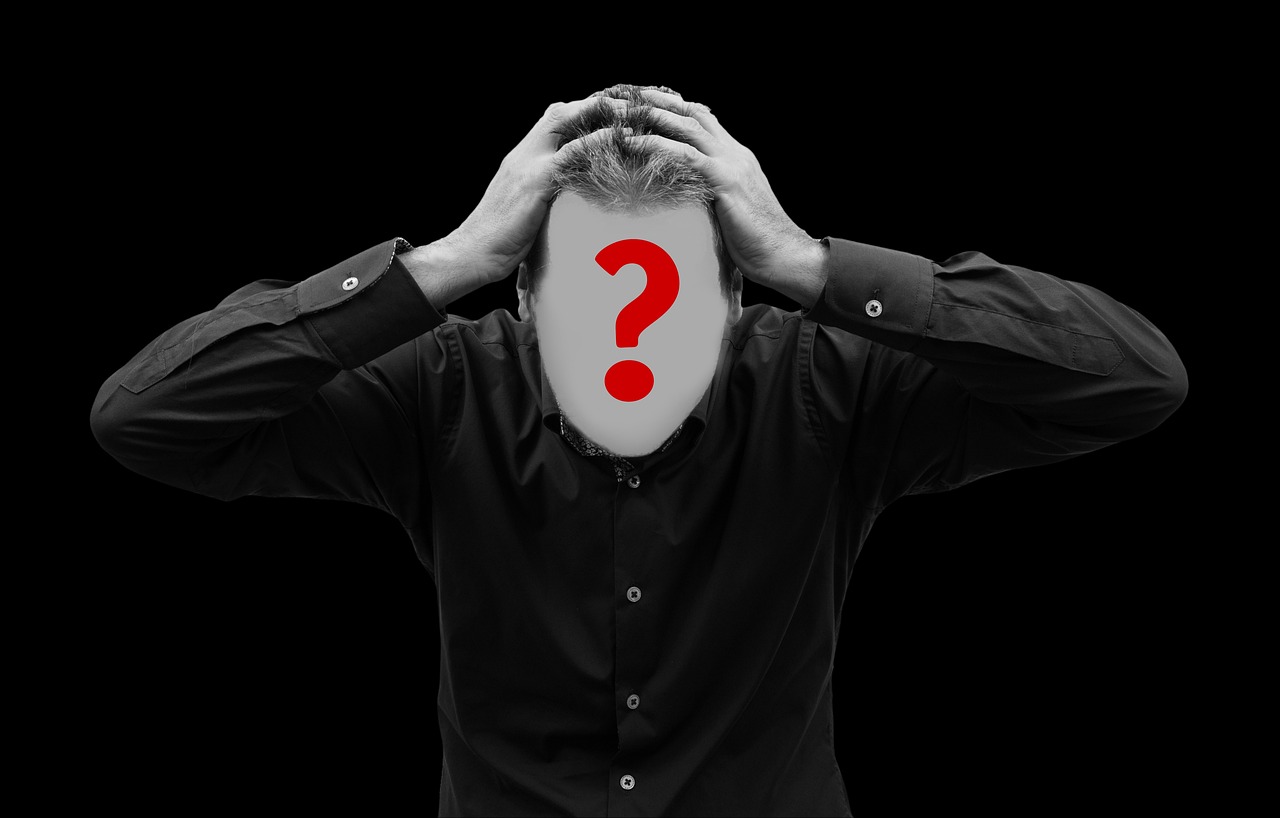
Examples of Unconscious Bias
Unconscious bias is like the sneaky shadow that follows us around, influencing our decisions and perceptions without us even realizing it. It's that little voice in our heads that whispers judgments based on stereotypes rather than facts. For instance, consider a hiring manager who unconsciously favors candidates with names that sound more familiar or similar to their own. This bias can lead to a lack of diversity in the workplace, as qualified candidates from different backgrounds may be overlooked simply because of an unconscious preference.
Another common example arises in educational settings. Teachers may unknowingly hold lower expectations for students from certain racial or socioeconomic backgrounds. This can manifest in various ways, such as calling on students less frequently or providing less encouragement. As a result, these students might not receive the same opportunities to shine, perpetuating a cycle of disadvantage. The impact of such biases can be profound, affecting a child's self-esteem and academic performance.
In social situations, unconscious bias can also rear its head. Think about how we often make snap judgments about people based on their appearance or accents. For example, a person with a strong regional accent might be perceived as less intelligent or competent, regardless of their actual abilities. This bias isn't just harmful on a personal level; it can also contribute to broader societal issues, such as discrimination in job markets or unequal treatment in the legal system.
To illustrate the prevalence of unconscious bias, let's take a look at some statistics:
| Type of Bias | Percentage of People Affected |
|---|---|
| Gender Bias | 70% |
| Racial Bias | 67% |
| Age Bias | 65% |
These statistics highlight just how widespread unconscious bias can be, affecting various aspects of life from hiring practices to social interactions. By recognizing these biases, we can start to address them and work towards a more equitable society. It’s crucial to understand that while we may not be aware of these biases, they can significantly impact our decisions and the lives of others.
Moreover, unconscious bias is not just a personal issue; it can also infiltrate organizational cultures. For example, a tech company may unintentionally favor male candidates for leadership roles due to a long-standing stereotype that men are more suited for such positions. This not only limits opportunities for women but also stifles innovation by not incorporating diverse perspectives.
In conclusion, unconscious bias is pervasive and often operates without our awareness, shaping our interactions and decisions in ways we might not fully comprehend. By shining a light on these biases and understanding their implications, we can take steps to mitigate their effects and foster a more inclusive environment for everyone.
- What is unconscious bias? Unconscious bias refers to the automatic judgments we make about people based on stereotypes, which occur without our conscious awareness.
- How does unconscious bias affect decision-making? It can lead to unfair treatment in various contexts, such as hiring or education, by influencing our perceptions and actions without us realizing it.
- Can unconscious bias be mitigated? Yes, through awareness, training, and creating diverse environments, individuals and organizations can work to reduce the impact of unconscious bias.
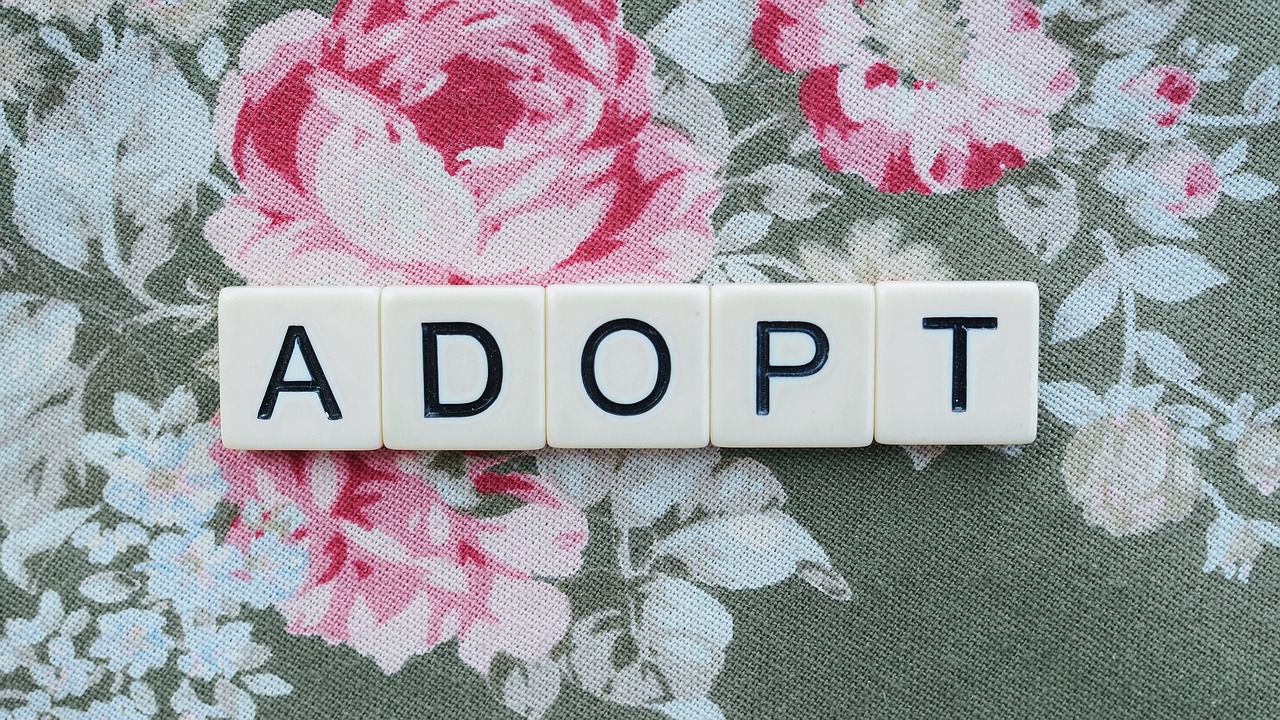
Impact on Society
Unconscious bias is like an invisible hand that shapes our society in profound ways. It's not just a personal quirk; it seeps into the very fabric of our communities, influencing decisions in education, law enforcement, healthcare, and beyond. Think about it: when we make snap judgments based on race, gender, or age, we're not just affecting individual lives; we're perpetuating systems of inequality that can last for generations.
For instance, in the field of education, unconscious bias can lead to teachers holding lower expectations for students from certain backgrounds. This can result in a cycle of underachievement that limits opportunities for those students in the future. Similarly, in law enforcement, biases can affect how officers perceive and react to individuals based on their appearance, leading to disproportionate targeting of minority groups. These biases are often not intentional, but their impact is undeniably significant.
Moreover, unconscious bias can also influence hiring practices. Research shows that resumes with traditionally "ethnic-sounding" names receive fewer callbacks than those with more common names. This not only affects the individuals seeking jobs but also deprives organizations of diverse talent, stifling innovation and creativity. The table below illustrates some key areas where unconscious bias has a measurable impact:
| Area | Impact of Unconscious Bias |
|---|---|
| Education | Lower expectations and achievement gaps among marginalized students. |
| Law Enforcement | Disproportionate targeting and criminalization of certain racial groups. |
| Healthcare | Disparities in treatment recommendations and patient outcomes. |
| Workplace | Reduced diversity and missed opportunities for innovation. |
As we navigate through our daily lives, it's crucial to recognize that these biases are often ingrained in our societal structures. They can lead to a lack of representation in media, politics, and leadership roles, which in turn reinforces stereotypes and limits the narratives that are told about different groups. In essence, unconscious bias not only affects individual lives but also shapes the collective consciousness of society.
To combat these pervasive issues, we must engage in open conversations about bias, promote awareness, and advocate for systemic changes. By understanding the impact of unconscious bias, we can work towards creating a more equitable society where everyone has the opportunity to thrive, regardless of their background.
- What is unconscious bias? Unconscious bias refers to the social stereotypes about certain groups of people that individuals form outside their conscious awareness.
- How can unconscious bias affect decision-making? It can lead to unfair treatment or unequal opportunities based on race, gender, age, or other characteristics without the decision-maker even realizing it.
- What are some strategies to mitigate unconscious bias? Strategies include awareness training, diverse hiring practices, and creating inclusive environments where all voices are heard.
- Can unconscious bias be eliminated? While it may not be possible to completely eliminate unconscious bias, it can be managed and mitigated through continuous education and self-reflection.

Recognizing Our Biases
Recognizing our biases is a crucial step toward fostering a more inclusive and equitable environment, whether in personal interactions or professional settings. Have you ever found yourself making a snap judgment about someone based on their appearance or background? This is a common occurrence, and it often happens without our conscious awareness. Understanding that biases exist within us is the first step to addressing them. It's like looking in a mirror and realizing that the reflection isn't just a physical one; it also reveals our preconceived notions and stereotypes.
One effective way to start recognizing our biases is through self-reflection. Taking a moment to pause and think about our decisions can unveil the underlying beliefs that influence our judgments. Ask yourself questions like, "Why do I feel this way about this person?" or "What experiences have shaped my views?" These reflective practices can illuminate the biases we may not even realize we hold.
Additionally, seeking feedback from others can provide valuable insights into our biases. Sometimes, we are so entrenched in our own perspectives that we fail to see how our actions affect those around us. Constructive criticism from colleagues or friends can be eye-opening. It’s like having a trusted friend point out a piece of spinach stuck in your teeth; it’s uncomfortable, but ultimately beneficial.
Organizations can also play a significant role in helping individuals recognize their biases. Implementing regular training sessions and workshops focused on bias awareness can create a culture of openness and learning. These sessions can include activities that challenge participants to confront their biases directly, such as role-playing scenarios or discussions around real-life case studies. By engaging in these practices, individuals can become more aware of their biases and, in turn, work towards mitigating them.
To further enhance our understanding of biases, we can utilize surveys and assessments. Tools like the Implicit Association Test (IAT) can help individuals uncover hidden biases by measuring their reactions to various stimuli. While these tests are not definitive, they can serve as a starting point for deeper exploration and discussion about our biases. Just remember, recognizing our biases is not about assigning blame but rather about acknowledging our humanity and the complexities of our social interactions.
In summary, recognizing our biases requires a combination of self-reflection, seeking feedback, organizational support, and utilizing assessment tools. Each of these strategies serves as a stepping stone toward greater awareness and understanding. By actively engaging in this process, we can cultivate a more inclusive environment where everyone feels valued and respected.
- What are biases? Biases are preconceived notions or attitudes that affect our understanding, actions, and decisions about others based on their characteristics.
- How can I identify my own biases? Self-reflection, seeking feedback from others, and utilizing tools like the Implicit Association Test can help identify personal biases.
- Why is recognizing bias important? Recognizing bias is essential for promoting fairness and equality in our interactions and decision-making processes.
- Can biases be changed? Yes, with awareness, education, and intentional effort, individuals can work to change their biases over time.

Strategies for Mitigation
Addressing bias, whether conscious or unconscious, is crucial for fostering an inclusive environment where everyone feels valued and respected. The first step in tackling these biases is through **education**. Training programs that focus on diversity and inclusion can create awareness among individuals about their own biases. These programs often include interactive workshops, discussions, and real-life scenarios that challenge participants to reflect on their own beliefs and behaviors. By engaging in such activities, individuals can start to recognize their biases and understand how these biases influence their decisions and interactions with others.
Another effective strategy is to implement **diverse teams**. When individuals from various backgrounds come together, they bring different perspectives that can counteract bias. For instance, in hiring processes, having a diverse panel can help ensure that decisions are made more equitably. Moreover, diverse teams can enhance creativity and innovation, as they draw from a wider range of experiences and ideas. It's like cooking a stew; the more varied the ingredients, the richer the flavor!
Organizations can also promote **feedback mechanisms**. Creating a culture where employees feel safe to share their experiences regarding bias can provide valuable insights into how biases manifest within the organization. Regular surveys or feedback sessions can help identify areas where bias is prevalent and where improvements are needed. This approach not only helps in recognizing biases but also fosters a sense of community and shared responsibility in addressing these issues.
Furthermore, establishing clear **policies** that outline the organization's stance on bias and discrimination is essential. These policies should not only address what constitutes bias but also provide guidelines on how to report and handle incidents of bias. When employees know that there are consequences for biased behavior, they are more likely to think critically about their actions and the impact they have on others.
Lastly, promoting **self-reflection** is a powerful tool in mitigating bias. Encouraging individuals to take time to reflect on their thoughts and behaviors can lead to greater self-awareness. This can be facilitated through journaling or mindfulness practices, which help individuals to pause and consider their reactions and the underlying biases that may influence them. By taking a step back, individuals can cultivate a more thoughtful approach to their interactions, ultimately leading to more fair and equitable outcomes.
In conclusion, mitigating bias requires a multifaceted approach that combines education, diversity, feedback, clear policies, and self-reflection. By implementing these strategies, both individuals and organizations can work towards creating a more inclusive environment where everyone has the opportunity to thrive.
- What is the difference between conscious and unconscious bias?
Conscious bias refers to the attitudes and beliefs that individuals are aware of and can control, while unconscious bias operates below the level of awareness, subtly influencing perceptions and actions. - How can organizations effectively reduce bias?
Organizations can reduce bias by implementing training programs, fostering diverse teams, creating feedback mechanisms, establishing clear policies, and promoting self-reflection among employees. - Why is it important to address bias?
Addressing bias is crucial for promoting equity and inclusivity, ensuring that everyone has a fair chance in personal and professional settings, and enhancing overall organizational performance.
Frequently Asked Questions
- What is conscious bias?
Conscious bias refers to the attitudes and beliefs that we are fully aware of and can control. It influences our decisions and interactions in ways that we can often articulate and recognize. For instance, if you prefer hiring candidates from a specific university because you believe they offer superior education, that's a conscious bias.
- How does unconscious bias differ from conscious bias?
Unconscious bias operates below our level of awareness. These biases are automatic and can affect our perceptions and actions without us even realizing it. For example, you might unconsciously associate certain traits with specific genders or ethnicities, which can influence your judgments in hiring or social situations.
- Can you provide examples of conscious bias?
Sure! Some examples include preferring candidates who share your hobbies during interviews or making assumptions about someone's abilities based on their appearance. These biases are often explicit and can lead to unfair treatment in various settings.
- What are the impacts of conscious bias on decision-making?
Conscious bias can significantly skew decision-making processes, especially in hiring, promotions, and evaluations. When individuals are aware of their biases, they can make more equitable and informed decisions, leading to a more diverse and inclusive environment.
- How can I mitigate conscious bias?
To reduce conscious bias, consider engaging in self-reflection, participating in bias training, and fostering an inclusive workplace culture. These strategies help individuals recognize their biases and work towards minimizing their impact.
- What are some common examples of unconscious bias?
Common examples of unconscious bias include associating certain professions with specific genders, or underestimating someone's capabilities based on their age. These biases often occur without any conscious intent and can lead to unfair judgments.
- How does unconscious bias affect society?
Unconscious bias has significant implications for societal structures, such as education and law enforcement. It can perpetuate inequality, affecting opportunities and outcomes for marginalized groups, and hinder social progress.
- How can individuals recognize their biases?
Awareness is key! Individuals can identify their biases through self-reflection, seeking feedback from others, and participating in workshops or training sessions focused on bias recognition.
- What strategies can organizations implement to combat bias?
Organizations can adopt various strategies, including implementing bias training programs, promoting diverse teams, and enacting policy changes that prioritize inclusivity and equity. These approaches can help create a more balanced and fair environment.


